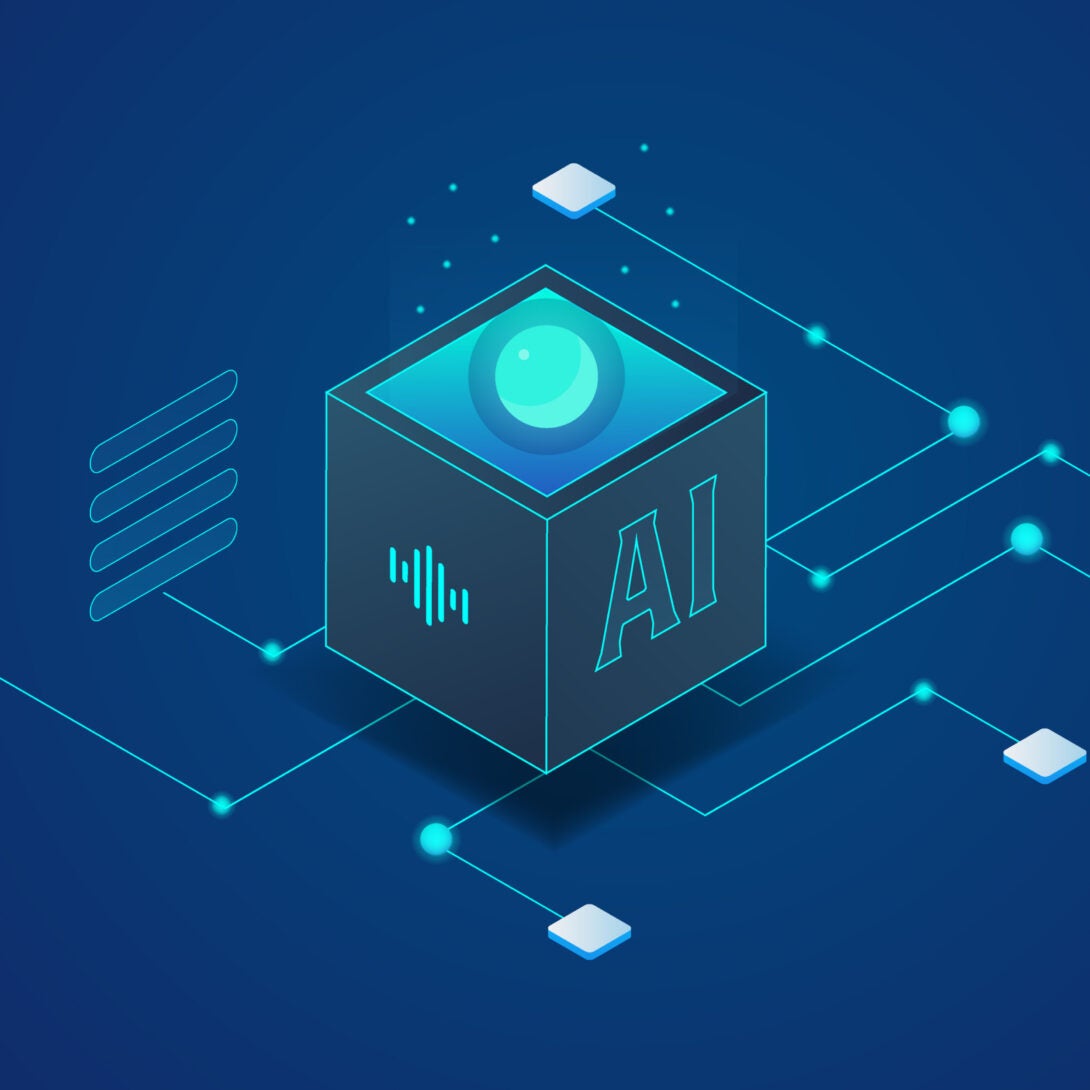
Securityjobs
Add a review FollowOverview
-
Founded Date November 18, 1904
-
Sectors Health Care
-
Posted Jobs 0
-
Viewed 68
Company Description
Understanding DeepSeek R1

We’ve been tracking the explosive rise of DeepSeek R1, which has actually taken the AI world by storm in current weeks. In this session, we dove deep into the advancement of the DeepSeek family – from the early designs through DeepSeek V3 to the development R1. We likewise checked out the technical innovations that make R1 so special on the planet of open-source AI.
The DeepSeek Ancestral Tree: From V3 to R1

DeepSeek isn’t just a single design; it’s a household of increasingly sophisticated AI systems. The development goes something like this:
DeepSeek V2:
This was the structure design which leveraged a mixture-of-experts architecture, where just a subset of professionals are utilized at inference, considerably improving the processing time for each token. It also featured multi-head latent attention to reduce memory footprint.
DeepSeek V3:
This design presented FP8 training strategies, which helped drive down training costs by over 42.5% compared to previous iterations. FP8 is a less precise method to save weights inside the LLMs however can significantly enhance the memory footprint. However, training utilizing FP8 can typically be unstable, and it is hard to obtain the wanted training outcomes. Nevertheless, DeepSeek uses numerous techniques and attains extremely steady FP8 training. V3 set the phase as a highly efficient model that was currently economical (with claims of being 90% more affordable than some closed-source alternatives).
DeepSeek R1-Zero:
With V3 as the base, the group then introduced R1-Zero, the very first reasoning-focused iteration. Here, the focus was on teaching the design not simply to create responses however to “think” before responding to. Using pure support knowing, the model was motivated to create intermediate thinking actions, for instance, taking extra time (typically 17+ seconds) to resolve an easy issue like “1 +1.”
The key innovation here was making use of group relative policy optimization (GROP). Instead of depending on a conventional procedure benefit design (which would have needed annotating every step of the thinking), GROP compares numerous outputs from the model. By tasting several potential responses and scoring them (utilizing rule-based steps like exact match for mathematics or verifying code outputs), the system learns to prefer thinking that results in the proper result without the need for explicit guidance of every intermediate idea.
DeepSeek R1:

Recognizing that R1-Zero’s not being watched method produced reasoning outputs that might be difficult to read or even mix languages, the designers returned to the drawing board. They utilized the raw outputs from R1-Zero to generate “cold start” data and then by hand wiki.dulovic.tech curated these examples to filter and enhance the quality of the reasoning. This human post-processing was then used to fine-tune the initial DeepSeek V3 design further-combining both reasoning-oriented reinforcement knowing and supervised fine-tuning. The result is DeepSeek R1: a design that now produces understandable, coherent, and dependable reasoning while still maintaining the effectiveness and cost-effectiveness of its predecessors.
What Makes R1 Series Special?
The most fascinating aspect of R1 (zero) is how it established thinking abilities without explicit guidance of the thinking process. It can be further improved by using cold-start data and supervised support discovering to produce readable thinking on general tasks. Here’s what sets it apart:
Open Source & Efficiency:
R1 is open source, enabling scientists and designers to inspect and build upon its developments. Its expense efficiency is a significant selling point particularly when compared to closed-source models (claimed 90% more affordable than OpenAI) that require huge calculate budget plans.
Novel Training Approach:
Instead of relying exclusively on annotated thinking (which is both pricey and lengthy), the design was trained using an outcome-based technique. It started with easily proven tasks, such as mathematics problems and coding exercises, where the correctness of the final answer could be easily determined.
By utilizing group relative policy optimization, the training process compares multiple generated answers to identify which ones satisfy the preferred output. This relative scoring system allows the model to learn “how to think” even when intermediate reasoning is created in a freestyle manner.
Overthinking?
An intriguing observation is that DeepSeek R1 often “overthinks” easy issues. For instance, when asked “What is 1 +1?” it may invest nearly 17 seconds evaluating various scenarios-even thinking about binary representations-before concluding with the appropriate response. This self-questioning and verification process, although it may seem ineffective in the beginning glimpse, might prove beneficial in complex tasks where deeper thinking is required.
Prompt Engineering:
Traditional few-shot prompting techniques, which have worked well for many chat-based models, can actually degrade performance with R1. The developers suggest utilizing direct problem declarations with a zero-shot method that defines the output format plainly. This ensures that the model isn’t led astray by extraneous examples or hints that may interfere with its internal thinking process.
Beginning with R1
For those aiming to experiment:
Smaller versions (7B-8B) can operate on customer GPUs or even just CPUs
Larger versions (600B) need considerable compute resources
Available through major cloud service providers
Can be released locally through Ollama or vLLM
Looking Ahead
We’re especially fascinated by numerous ramifications:
The potential for this method to be applied to other thinking domains
Influence on agent-based AI systems generally developed on chat designs
Possibilities for combining with other guidance techniques
Implications for enterprise AI implementation
Thanks for checking out Deep Random Thoughts! Subscribe free of charge to receive new posts and support my work.
Open Questions
How will this impact the development of future thinking designs?
Can this technique be reached less verifiable domains?
What are the ramifications for multi-modal AI systems?
We’ll be watching these developments closely, especially as the neighborhood starts to experiment with and build on these methods.
Resources
Join our Slack neighborhood for ongoing discussions and updates about DeepSeek and other AI developments. We’re seeing interesting applications already emerging from our bootcamp participants dealing with these designs.
Chat with DeepSeek:
https://www.deepseek.com/
Papers:
DeepSeek LLM
DeepSeek-V2
DeepSeek-V3
DeepSeek-R1
Blog Posts:
The Illustrated DeepSeek-R1
DeepSeek-R1 Paper Explained
DeepSeek R1 – a short summary
Cloud Providers:
Nvidia
Together.ai
AWS
Q&A
Q1: Which model deserves more attention – DeepSeek or Qwen2.5 Max?
A: While Qwen2.5 is likewise a strong model in the open-source community, the choice ultimately depends on your use case. DeepSeek R1 emphasizes advanced thinking and a novel training method that might be particularly valuable in jobs where verifiable reasoning is crucial.
Q2: Why did significant service providers like OpenAI select supervised fine-tuning instead of reinforcement knowing (RL) like DeepSeek?
A: We should note upfront that they do utilize RL at the very least in the form of RLHF. It is highly likely that designs from major service providers that have reasoning abilities currently utilize something similar to what DeepSeek has done here, but we can’t make certain. It is likewise likely that due to access to more resources, they preferred monitored fine-tuning due to its stability and the all set availability of big annotated datasets. Reinforcement knowing, although effective, can be less predictable and more difficult to manage. DeepSeek’s technique innovates by applying RL in a reasoning-oriented manner, making it possible for the design to find out effective internal thinking with only very little procedure annotation – a method that has shown appealing in spite of its intricacy.
Q3: Did DeepSeek use test-time compute techniques comparable to those of OpenAI?
A: DeepSeek R1’s style stresses efficiency by leveraging methods such as the mixture-of-experts method, which activates only a subset of specifications, to reduce calculate during reasoning. This focus on efficiency is main to its expense benefits.
Q4: What is the distinction in between R1-Zero and R1?
A: R1-Zero is the preliminary model that learns reasoning entirely through reinforcement learning without explicit process supervision. It creates intermediate thinking actions that, while sometimes raw or mixed in language, work as the structure for learning. DeepSeek R1, on the other hand, fine-tunes these outputs through human post-processing and supervised fine-tuning. In essence, R1-Zero supplies the unsupervised “stimulate,” and R1 is the polished, more meaningful variation.
Q5: How can one remain updated with in-depth, technical research while handling a hectic schedule?
A: Remaining existing includes a combination of actively engaging with the research community (like AISC – see link to sign up with slack above), following preprint servers like arXiv, going to pertinent conferences and webinars, and taking part in conversation groups and newsletters. Continuous engagement with online neighborhoods and collaborative research projects likewise plays an essential role in keeping up with technical advancements.
Q6: In what use-cases does DeepSeek outshine models like O1?
A: The short answer is that it’s prematurely to tell. DeepSeek R1’s strength, nevertheless, depends on its robust reasoning abilities and its efficiency. It is particularly well fit for tasks that require verifiable logic-such as mathematical problem solving, code generation, and structured decision-making-where intermediate reasoning can be examined and validated. Its open-source nature even more enables tailored applications in research and business settings.
Q7: What are the implications of DeepSeek R1 for business and start-ups?
A: The open-source and cost-efficient style of DeepSeek R1 decreases the entry barrier for deploying advanced language designs. Enterprises and start-ups can utilize its sophisticated reasoning for agentic applications ranging from automated code generation and customer assistance to data analysis. Its versatile deployment options-on customer hardware for smaller models or cloud platforms for bigger ones-make it an appealing alternative to proprietary solutions.
Q8: Will the model get stuck in a loop of “overthinking” if no right response is found?
A: While DeepSeek R1 has been observed to “overthink” simple problems by exploring numerous reasoning courses, it integrates stopping criteria and examination mechanisms to prevent infinite loops. The support discovering structure encourages merging toward a verifiable output, even in uncertain cases.
Q9: Is DeepSeek V3 completely open source, and is it based on the Qwen architecture?

A: Yes, DeepSeek V3 is open source and worked as the structure for later models. It is built on its own set of innovations-including the mixture-of-experts method and FP8 training-and is not based upon the Qwen architecture. Its design highlights performance and cost reduction, setting the stage for the reasoning developments seen in R1.
Q10: How does DeepSeek R1 perform on vision jobs?
A: DeepSeek R1 is a text-based model and does not incorporate vision abilities. Its design and training focus exclusively on language processing and thinking.
Q11: Can professionals in specialized fields (for example, laboratories working on treatments) apply these approaches to train domain-specific designs?
A: Yes. The developments behind DeepSeek R1-such as its outcome-based reasoning training and efficient architecture-can be adapted to different domains. Researchers in fields like biomedical sciences can tailor these approaches to develop models that resolve their particular difficulties while gaining from lower compute costs and robust reasoning capabilities. It is most likely that in deeply specialized fields, however, there will still be a requirement for monitored fine-tuning to get reliable results.

Q12: Were the annotators for the human post-processing specialists in technical fields like computer technology or mathematics?
A: The discussion indicated that the annotators mainly focused on domains where accuracy is quickly verifiable-such as math and coding. This recommends that expertise in technical fields was certainly leveraged to make sure the precision and clearness of the .
Q13: Could the model get things wrong if it counts on its own outputs for discovering?
A: While the design is created to enhance for appropriate responses through support knowing, there is always a danger of errors-especially in uncertain scenarios. However, by assessing numerous prospect outputs and strengthening those that result in verifiable outcomes, the training procedure lessens the possibility of propagating inaccurate reasoning.
Q14: How are hallucinations decreased in the model provided its iterative reasoning loops?
A: Making use of rule-based, verifiable tasks (such as mathematics and coding) assists anchor the model’s thinking. By comparing numerous outputs and utilizing group relative policy optimization to strengthen only those that yield the correct result, the design is assisted away from generating unproven or hallucinated details.
Q15: Does the design depend on complex vector mathematics?
A: Yes, advanced techniques-including complex vector math-are integral to the implementation of mixture-of-experts and attention mechanisms in DeepSeek R1. However, the main focus is on utilizing these strategies to make it possible for effective reasoning rather than showcasing mathematical complexity for its own sake.
Q16: Some worry that the design’s “thinking” might not be as improved as human reasoning. Is that a valid concern?
A: Early versions like R1-Zero did produce raw and often hard-to-read reasoning. However, the subsequent refinement process-where human professionals curated and improved the thinking data-has substantially enhanced the clarity and reliability of DeepSeek R1’s internal idea process. While it remains a progressing system, iterative training and feedback have resulted in meaningful enhancements.
Q17: Which model variations appropriate for regional release on a laptop with 32GB of RAM?
A: For regional testing, a medium-sized model-typically in the series of 7B to 8B parameters-is suggested. Larger models (for instance, those with hundreds of billions of criteria) need substantially more computational resources and are much better fit for cloud-based deployment.
Q18: Is DeepSeek R1 “open source” or does it use only open weights?
A: DeepSeek R1 is offered with open weights, implying that its design specifications are openly available. This aligns with the general open-source approach, enabling researchers and designers to further explore and build on its developments.
Q19: What would happen if the order of training were reversed-starting with monitored fine-tuning before unsupervised support knowing?

A: The existing technique allows the design to first check out and produce its own reasoning patterns through not being watched RL, and then refine these patterns with monitored methods. Reversing the order may constrain the model’s capability to discover varied reasoning courses, potentially limiting its total performance in jobs that gain from self-governing thought.
Thanks for reading Deep Random Thoughts! Subscribe totally free to receive brand-new posts and support my work.



